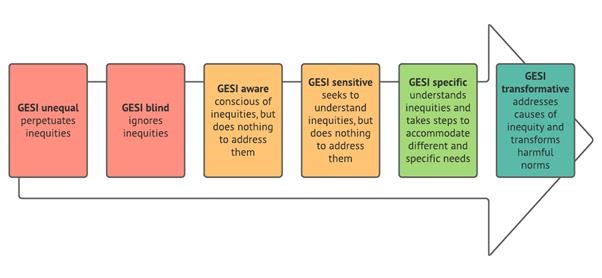Women in Climate (WiC) network
Women in Climate (WiC) network
Posted by Ruth Chapman
30 November 2022This month we had a discussion-based session, following up on some of the themes discussed earlier in the year, during our session with Helene Hewitt and Anna Piriani. Helene and Anna were both involved in recent IPCC reports and were able to offer very informed commentary on diversity in the IPCC within the working groups. You can read more about this event here (link to April 2022 blog). A recent UNFCCC report titled ‘Dimensions and examples of the gender-differentiated impacts of climate change, the role of women as agents of change and opportunities for women’ was the focus of November’s discussion, and it picked up on many of the themes discussed back in April. The slides linked here (UNFCCC ppt slides) give a summary of the topics in the report.
Many people commented on the section titled ‘women as agents for change’. This section discussed women in decision making positions, and how more diversity in decision making often leads to more sustainable policies.
Another interesting point was noted from the report; 22% of employees in the energy sector are women. It was noted that this sector was particularly highlighted by the report due to the largest gender gap. This led to an interesting discussion about intersectionality, and how often different characteristics can combine to put people at even further disadvantage.
Very little was mentioned in the report about challenges specifically faced by women in cities. Instead, there is a large discussion of the challenges women face in rural settings, such as land ownership laws in many countries (and how this affects decision making), and risks from domestic violence when collecting water and firewood.
Rosie Oakes (Met Office) also commented on some interesting International Climate Services work she is involved with, which looks at how emergency warnings are communicated, e.g., flood warnings. In some countries, different communication methods may reach different parts of the population, e.g., men more likely to have mobile phones, while women may have access to a radio. This is captured as GESI – gender equity and social inclusion, which is summarised in the below graphic, from the WISER GESI Action plan (adapted from Pederson et al. 2015).

Some other areas of discussion included the following:
· The need for better data, especially in the Global South
· How to use culturally localised knowledge
· Sensitivity to small perturbations in spaces where there are less women
· The gender breakdowns in different working groups of the IPCC (see April 2022 blog)
· Progress that has been made at the Met Office in EDI in recent years.
Reference:
Pederson A, Greaves L, Poole N. 2015. Gender-transformative health promotion for women: a framework for action. Health Promotional International. doi: 10.1093/heapro/dau083.